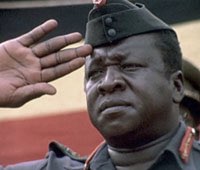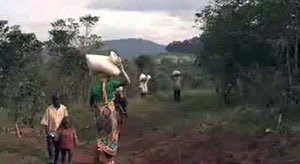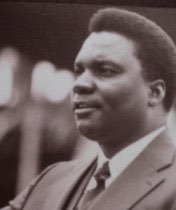Encounters with conflict and peace
Displacement and refugees
For thirty-five years, Rwanda and its neighbours - especially Burundi and Uganda - were drawn into a cycle of killings and reprisals.
As a result, hundreds of thousands of Rwandese became unwelcome refugees in surrounding countries.
- > Rwandan refugees flee to Uganda
- Many Tutsi fled north to Uganda where they were cruelly treated by the armies of the Ugandan dictators Milton Obote and Idi Amin.

"There as many as 200,000 people attempted to create new lives in a country that itself was experiencing a traumatic evolution into nationhood. They left with bitter memories and a burning desire to one day come back." Fergal Keane - > refugees from Burundi arrive in Rwanda
- In the south, thousands of Hutus were coming into Rwanda as refugees from Tutsi-dominated Burundi.

"In neighbouring Burundi the Tutsi minority succeeded in holding power after independence… The Burundian army murdered nearly a quarter of a million Hutus (virtually the entire educated class) in 1972…
In 1992 the Burundian army rampaged through Hutu areas on a murder campaign following a series of attacks by Hutu militiamen. The brutal campaign drove thousands of Hutu refugees into Rwanda. Many of these refugees were later to play a major role in the genocide. They were among the most feared killers and Tutsi survivors spoke of the Burundian refugees' need to humiliate their victims before murdering them." Fergal Keane - > thousands displaced within Rwanda
- As well as the movement of refugees between countries, within Rwanda itself thousands of people - both Hutu and Tutsi - became displaced. They either fled or were forcibly moved to inhospitable parts of the country, where they were left to fend for themselves…

"Desperate Tutsis… were herded onto the wooden beds of trucks provided by the Belgian colonial administration and, after travelling all night, were abandoned on the banks of the Akanyara River.
Crossing the river, they entered a region of bush and forests... Some Tutsi elders still recall their encampments of leaf huts, protected at night by campfires, on a savannah ruled by herds of elephants and buffalo…
Dumped on the outskirts of marshes humming with mosquitos and tsetse flies, the Tutsi pioneers encountered sleeping sickness, malaria, and typhoid… Successive waves of Tutsis and Hutus arrived, driven from their native regions by massacres or poverty, settling in turn on the fourteen hills of Nyamata Commune. " Jean Hatzfeld
Scapegoating by a corrupt government
Meanwhile, since Independence in 1962, Rwanda had basically became a corrupt one-party state. The new Hutu leaders used large amounts of public money for their own benefit, and gave jobs to friends and supporters. There was widespread discrimination against the Tutsi. “The populist Hutu administration depicted all Tutsis as scheming, treacherous speculators and parasites in an overpopulated country.” (Jean Hatzfeld)
Major General Juvenal Habyarimana (the Minister for Defence) took power in a military coup within Rwanda in 1973.

Vast sums of aid sent by foreign governments and agencies went either directly or indirectly into the pockets of senior government ministers and officials… while the peasants were encouraged to blame the Tutsis for their problems. Again there are echoes of the Nazis' scapegoating of the Jews in the thirties. " Fergal Keane
< previous page | next page >
In this section
A HISTORY OF CONFLICT
Real differences
Hutu and Tutsi
A history of conflict
THE POLITICS OF RACISM
Colonialism
A messy power shift
Refugees and scapegoating
Cheap tricks
Preparing for genocide
INSIGHTS
Pressures
In the villages
STORIES
My friend the killer

Real differences
Hutu and Tutsi
A history of conflict
THE POLITICS OF RACISM
Colonialism
A messy power shift
Refugees and scapegoating
Cheap tricks
Preparing for genocide
INSIGHTS
Pressures
In the villages
STORIES
My friend the killer

